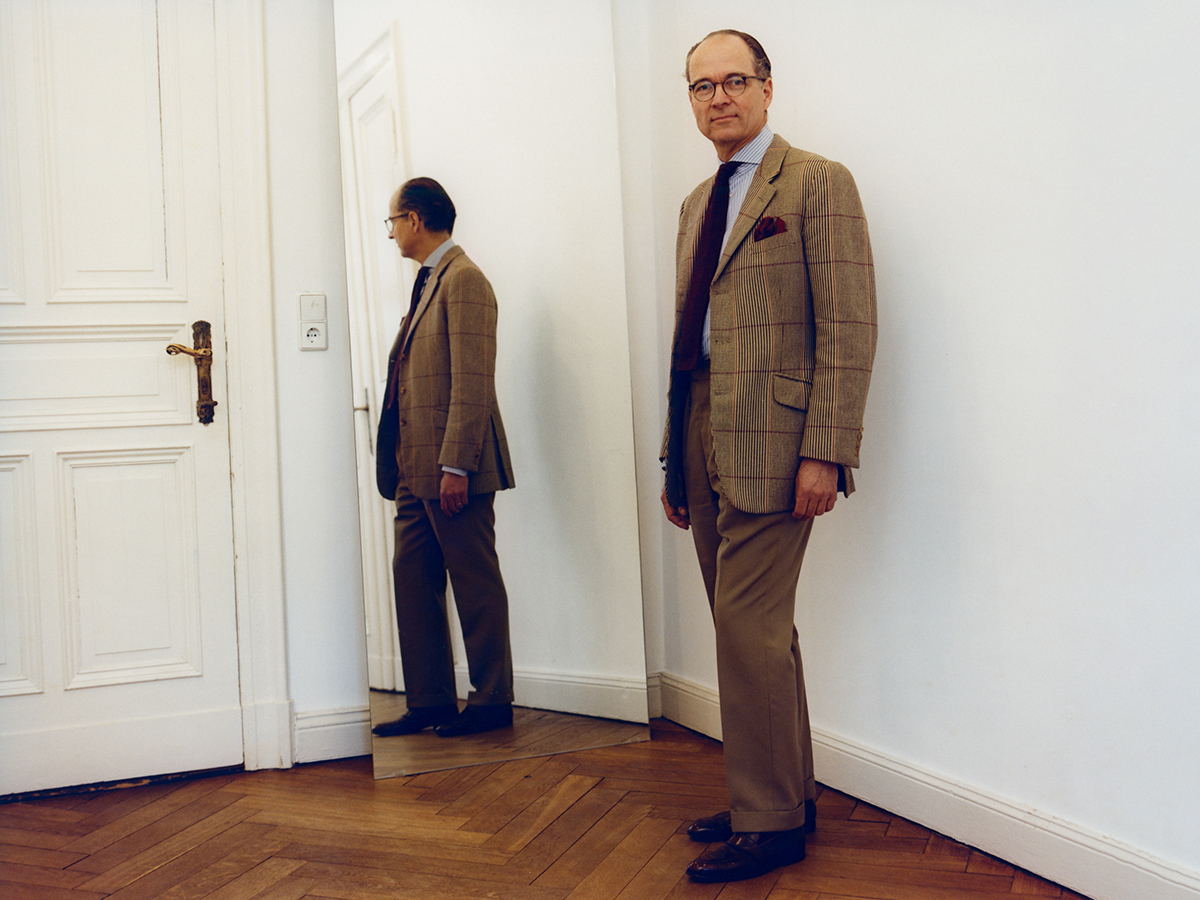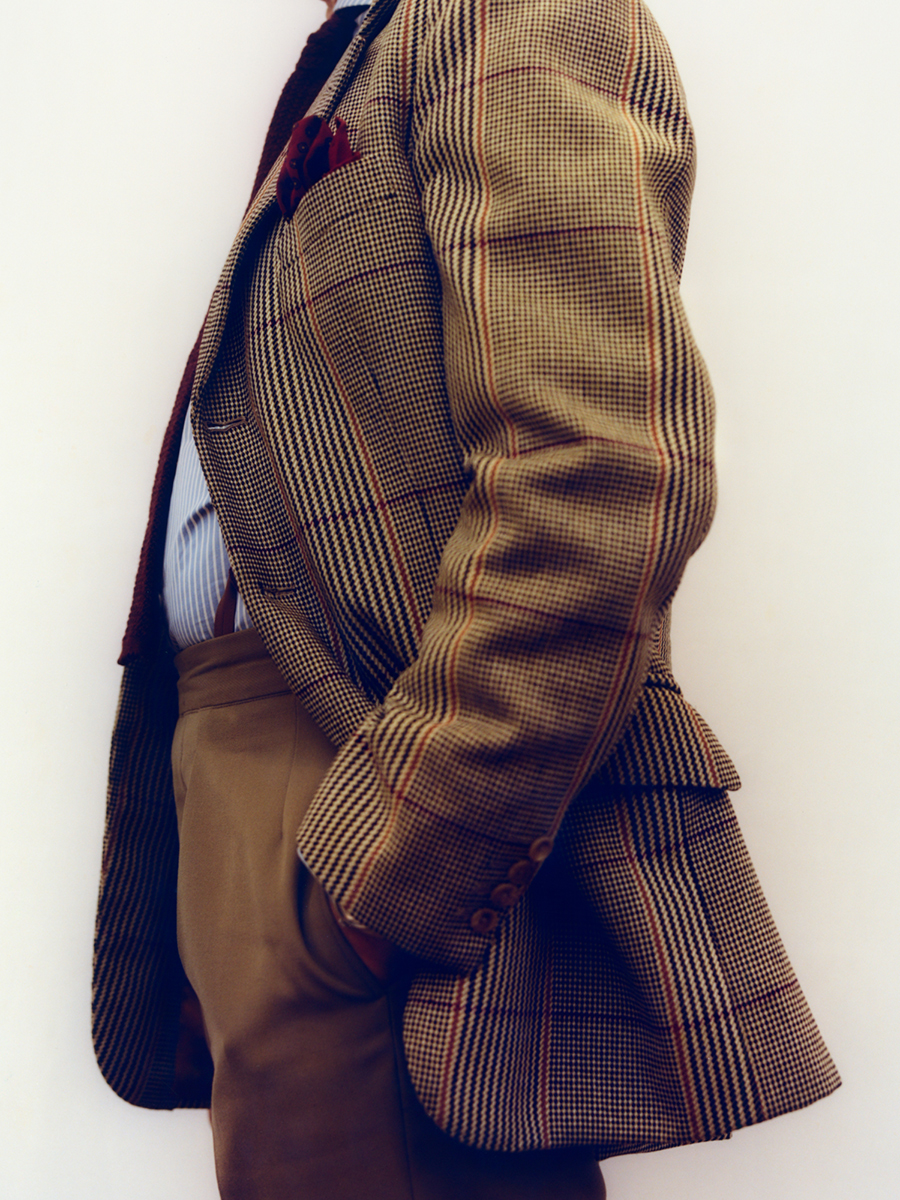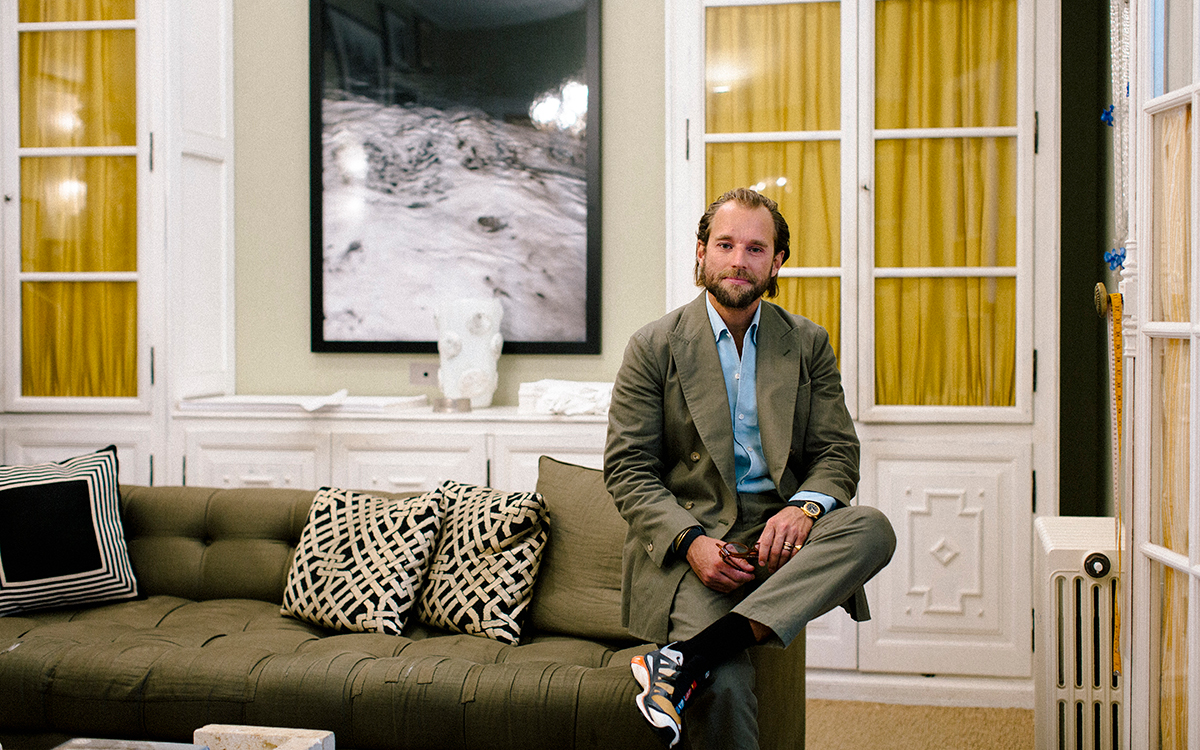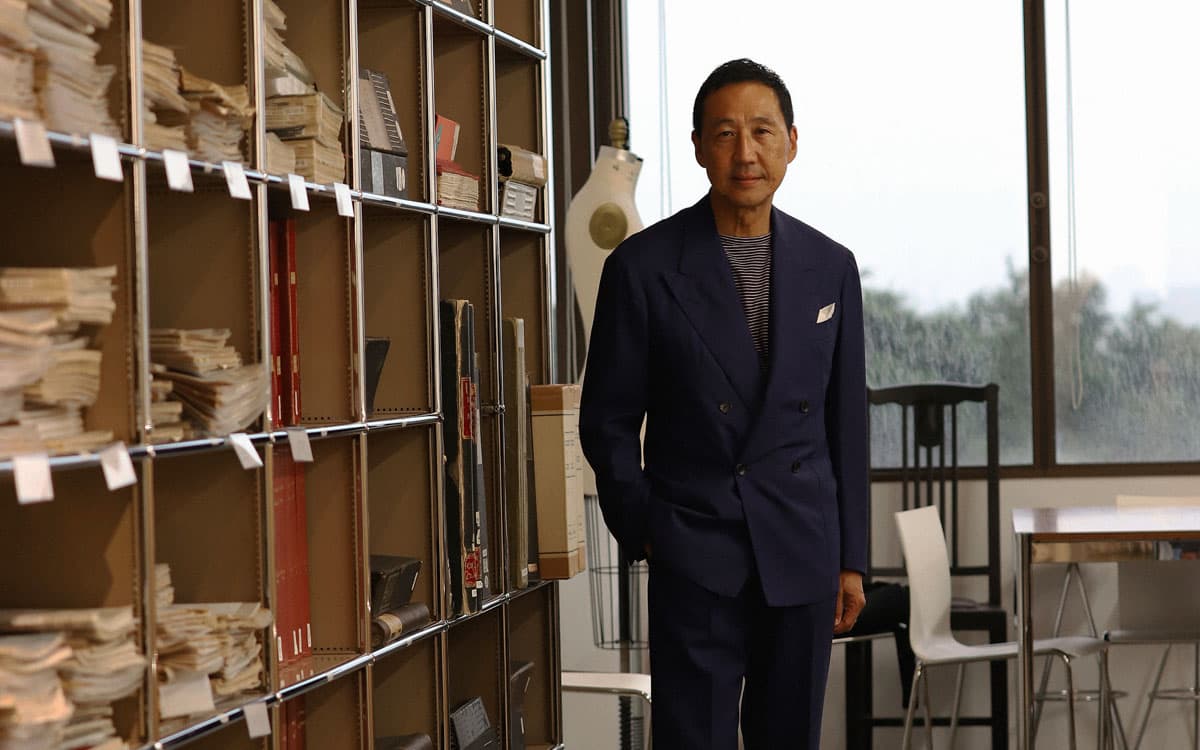

“I’m afraid I don’t have any nice story to tell about how I got into clothes. I didn’t have grandparents who were tailors or anything like that,” says Bernhard Roetzel, as we sit sipping cups of tea on a video call on a quiet Friday afternoon. His matter-of-fact attitude is refreshingly straight forward and comes, one supposes, from years of both interviewing and being interviewed. If I didn’t know better I’d say his candour is quintessentially Germanic, but he’d doubtless tell me that’s an ungentlemanly thing to say, so I’ll resist…
“I think the interest in menswear comes from my childhood,” he continues. “I developed a fascination with old films and the clothes that I saw on-screen. The ‘30s through to the ‘60s felt dramatically different to the mid-70s and ‘80s as I grew up. I remember seeing Pillow Talk, for example, and thinking ‘wow, these clothes are just so elegant’.”
Roetzel’s name is one you’ll doubtless be familiar with. The author of more than 15 books on style and etiquette, and one of Germany’s foremost menswear writers, he’s a recognisable figure on the menswear scene, particularly at Pitti Uomo. His wealth of sartorial expertise has been a lifetime in the making, no less – he started shopping for classic clothes in his early teens.
“At maybe 13 or 15-years-old, I started searching secondhand stores in Hamburg and buying second-hand clothes because they had so much more character than new things,” he says. “I remember buying an old winter overcoat from the ‘60s – from before tailoring was fused together – and being really impressed by the quality and how it had aged.
“The turning point came for me when I moved to Hanover in 1988 to study Graphic Design. I met a bunch of really well-dressed guys; they wore Barbour jackets, Goodyear Welted shoes and they had good shirts. I realised that you could get good quality modern clothes, as well as vintage pieces. I also started to learn more about where I could buy these things. In the late ‘80s, there were two or three shops in Germany where you could get Alden Cordovan shoes, and they were very big at the time.”

Luckily, for Bernhard, two of them were close to home. “There was a fun rivalry between two gentlemen’s outfitters in Hanover: Michael Jondral and H.B. Möller,” he says with a nostalgic grin.“Their shops were just around the corner from each other, and they always competed on product. One had Church’s shoes first, then the other had Alden. One would start to stock Attolini, then the other had Kiton. And when one had Kiton, the other couldn’t. I visited them both very often. At the time, I worked as a copywriter in advertising agencies and wherever I turned up people would comment on how I dressed. The Germans are very into English style, and back then I dressed like the Sloane Ranger and I loved the Sloane Ranger Handbook. Looking back it was a bit ridiculous, but I enjoyed it at the time.”
These early experiences shaped Bernhard’s sense of style, but it never occurred to him that writing on classic menswear could make for a career. “Until I wrote my first book, Gentleman, in 1997, I’d never thought about working in menswear professionally. It’s easier nowadays thanks to the internet – you can launch a blog or start a shop overnight – but back then it was print only, and the industry felt much more closed. Instead, I drove my then girlfriend nuts. We’d travel to London or Milan and I’d spend the whole time shopping or visiting artisans.”


That changed when his first book Gentleman hit the shelves. “My publisher really believed in the idea, so we printed the book in German, Swedish, Spanish and English. It came out in February and by October of the same year it was in every shop on Jermyn Street – T.M. Lewin bought hundreds of copies, Waterstones sold it – everyone. Almost overnight I was writing for German magazines and never looked back,” he explains.
Skip forward to today, and Bernhard is a respected figurehead for European classic menswear, with some 36,000 Instagram followers to his name, regular appearances in print and frequent speaking engagements. While his role in the industry has changed dramatically, his timeless sense of style has not. For this Well Worn story, he brought one of his most cherished pieces to the table; his bespoke Russel Check tweed sports coat, which was made by an independent Savile Row tailor in 1998.
“It’s really the best tweed jacket I’ve ever had – in fact it’s one of the best bespoke pieces I’ve ever had,” he says. “When I started shopping at Tobias Tailors, I had to budget so I planned my first few orders very carefully. First, I had a grey Sportex double-breasted suit made as a ‘sensible’ option, then I had this jacket made. Back then, they had a superb location in the middle of Savile Row, and I just walked in one day because I liked the shop window. I’ve had well over a dozen pieces from Tobias Tailors since, but I never ordered another tweed jacket from them because I loved this one so much. This has become a real reference piece for me. If you want a proper tweed jacket, it has to be English in my opinion.”


Very handsome it is too, some 23 years later. Perhaps unsurprisingly for a man who cares deeply about menswear, Bernhard’s a big believer in allowing clothes to age gracefully, and this thread runs throughout his whole wardrobe.
Cotonificio Albini S.p.A. - Via Dr. Silvio Albini 1, 24021 Albino (BG) – Italy
Società con unico socio - diretta e coordinata da Albini Group S.p.A.
P.I. 01884530161 - C.F. 08743540158 - Iscritta al Registro Imprese di Bergamo - REA 244649
Capitale sociale sottoscritto e versato € 11.170.960

